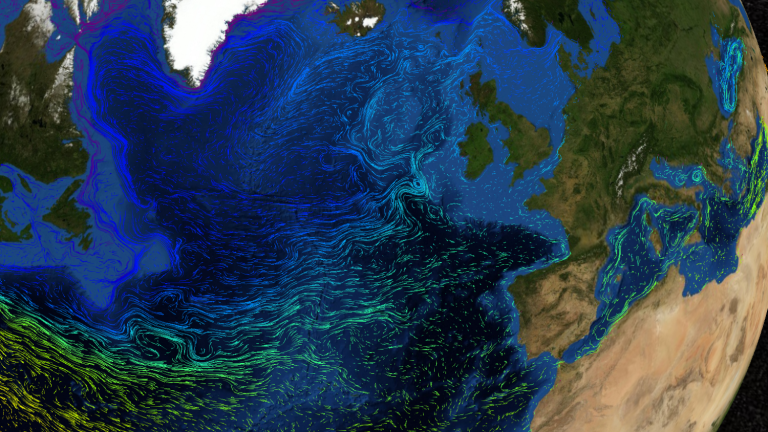
Without the ocean, the climate crisis would be even worse than it is. Each year, the ocean absorbs billions of tons of carbon from the atmosphere, preventing warming that greenhouse gas would otherwise cause. Scientists estimate about 25 to 30 percent of all carbon released into the atmosphere by both human and natural sources is absorbed by the ocean.
“But there’s a lot of uncertainty in that number,” says Ryan Woosley, a marine chemist and a principal research scientist in the Department of Earth, Atmospheric and Planetary Sciences (EAPS) at MIT. Different parts of the ocean take in different amounts of carbon depending on many factors, such as the season and the amount of mixing from storms. Current models of the carbon cycle don’t adequately capture this variation.
To close the gap, Woosley and a team of other MIT scientists developed a research proposal for the MIT Climate Grand Challenges competition — an Institute-wide campaign to catalyze and fund innovative research addressing the climate crisis. The team's proposal, “Ocean Vital Signs,” involves sending a fleet of sailing drones to cruise the oceans taking detailed measurements of how much carbon the ocean is really absorbing. Those data would be used to improve the precision of global carbon cycle models and improve researchers’ ability to verify emissions reductions claimed by countries.
“If we start to enact mitigation strategies—either through removing CO2 from the atmosphere or reducing emissions — we need to know where CO2 is going in order to know how effective they are,” says Woosley. Without more precise models there’s no way to confirm whether observed carbon reductions were thanks to policy and people, or thanks to the ocean.
“So that’s the trillion-dollar question,” says Woosley. “If countries are spending all this money to reduce emissions, is it enough to matter?”
In February, the team’s Climate Grand Challenges proposal was named one of 27 finalists out of the almost 100 entries submitted. From among this list of finalists, MIT will announce in April the selection of five flagship projects to receive further funding and support.
Woosley is leading the team along with Christopher Hill, a principal research engineer in EAPS. The team includes physical and chemical oceanographers, marine microbiologists, biogeochemists, and experts in computational modeling from across the department, in addition to collaborators from the Media Lab and the departments of Mathematics, Aeronautics and Astronautics, and Electrical Engineering and Computer Science.
Today, data on the flux of carbon dioxide between the air and the oceans are collected in a piecemeal way. Research ships intermittently cruise out to gather data. Some commercial ships are also fitted with sensors. But these present a limited view of the entire ocean, and include biases. For instance, commercial ships usually avoid storms, which can increase the turnover of water exposed to the atmosphere and cause a substantial increase in the amount of carbon absorbed by the ocean.
“It’s very difficult for us to get to it and measure that,” says Woosley. “But these drones can.”
If funded, the team’s project would begin by deploying a few drones in a small area to test the technology. The wind-powered drones — made by a California-based company called Saildrone — would autonomously navigate through an area, collecting data on air-sea carbon dioxide flux continuously with solar-powered sensors. This would then scale up to more than 5,000 drone-days’ worth of observations, spread over five years, and in all five ocean basins.
Those data would be used to feed neural networks to create more precise maps of how much carbon is absorbed by the oceans, shrinking the uncertainties involved in the models. These models would continue to be verified and improved by new data. “The better the models are, the more we can rely on them,” says Woosley. “But we will always need measurements to verify the models.”
Improved carbon cycle models are relevant beyond climate warming as well. “CO2 is involved in so much of how the world works,” says Woosley. “We're made of carbon, and all the other organisms and ecosystems are as well. What does the perturbation to the carbon cycle do to these ecosystems?”
One of the best understood impacts is ocean acidification. Carbon absorbed by the ocean reacts to form an acid. A more acidic ocean can have dire impacts on marine organisms like coral and oysters, whose calcium carbonate shells and skeletons can dissolve in the lower pH. Since the Industrial Revolution, the ocean has become about 30 percent more acidic on average.
“So while it's great for us that the oceans have been taking up the CO2, it's not great for the oceans,” says Woosley. “Knowing how this uptake affects the health of the ocean is important as well.”






